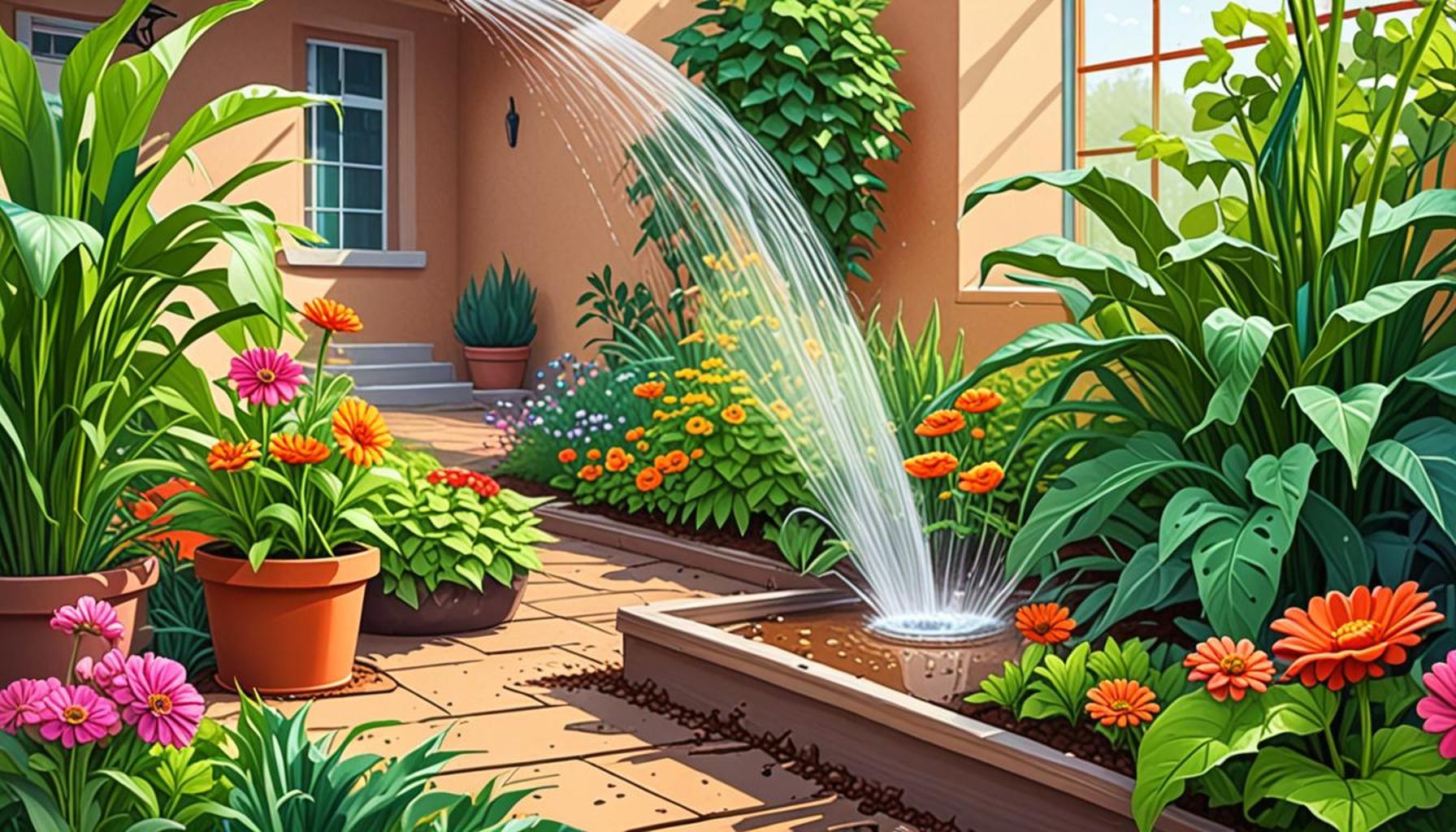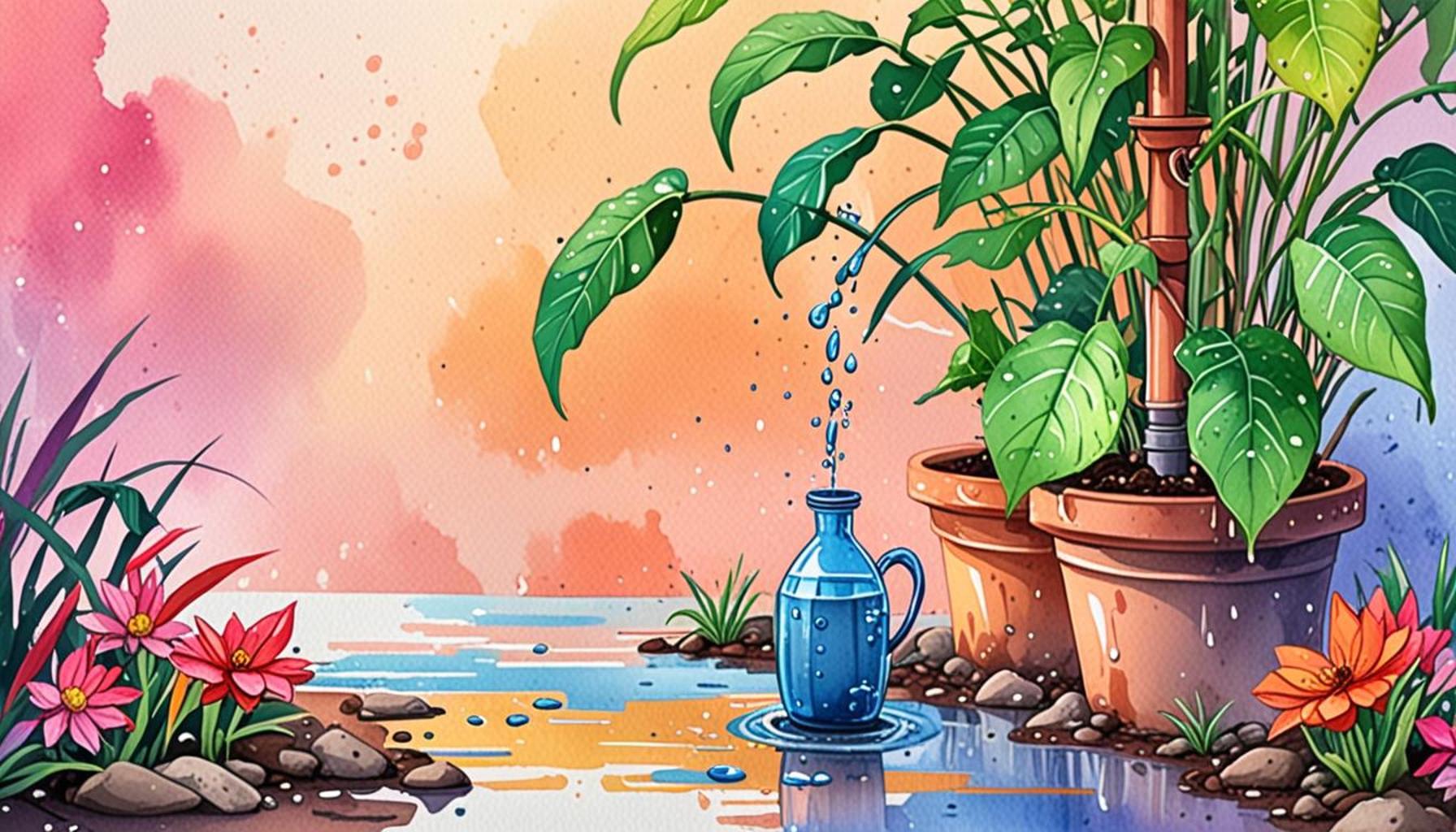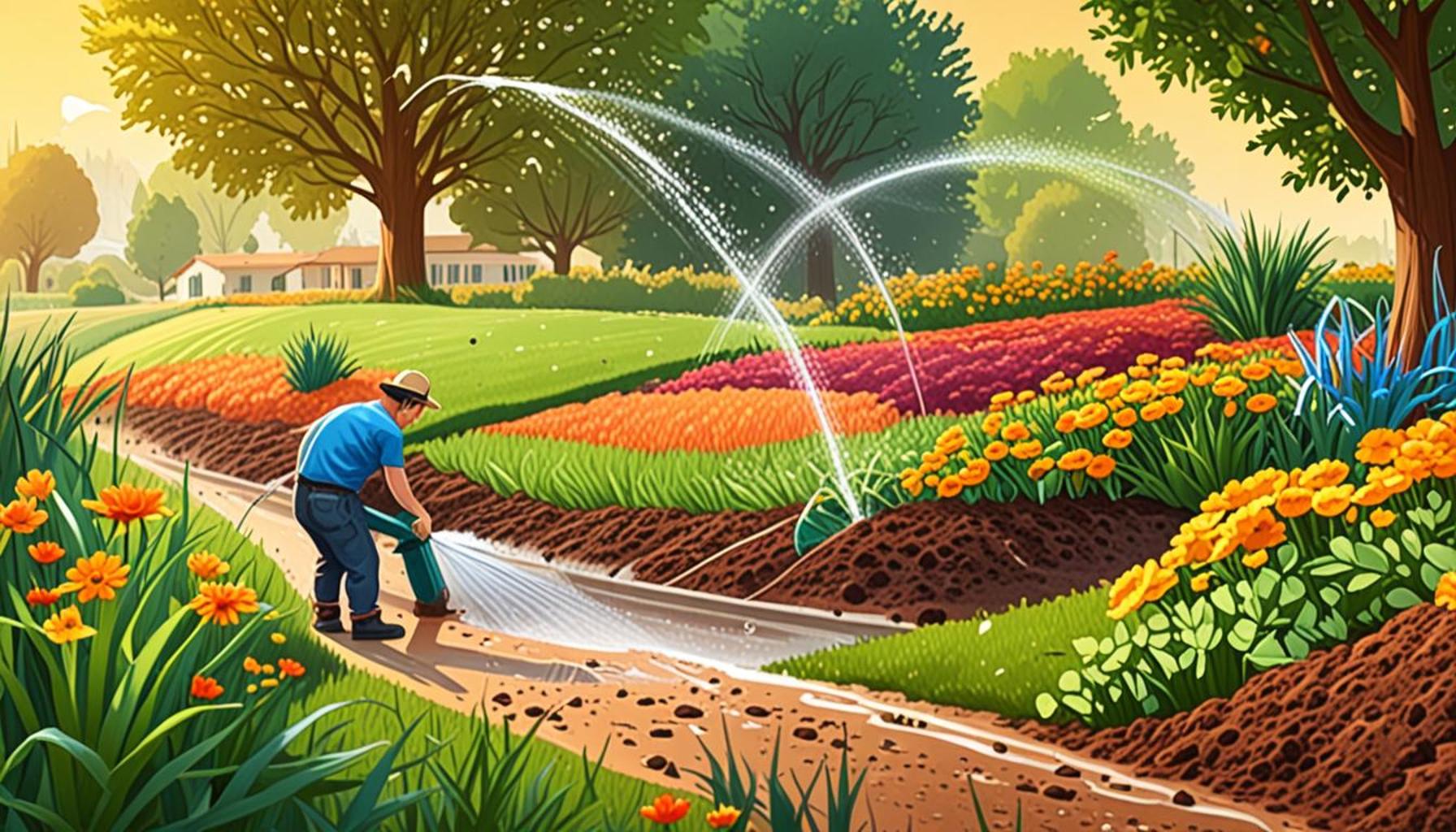How to Use Automated Irrigation Systems to Facilitate Home Gardening
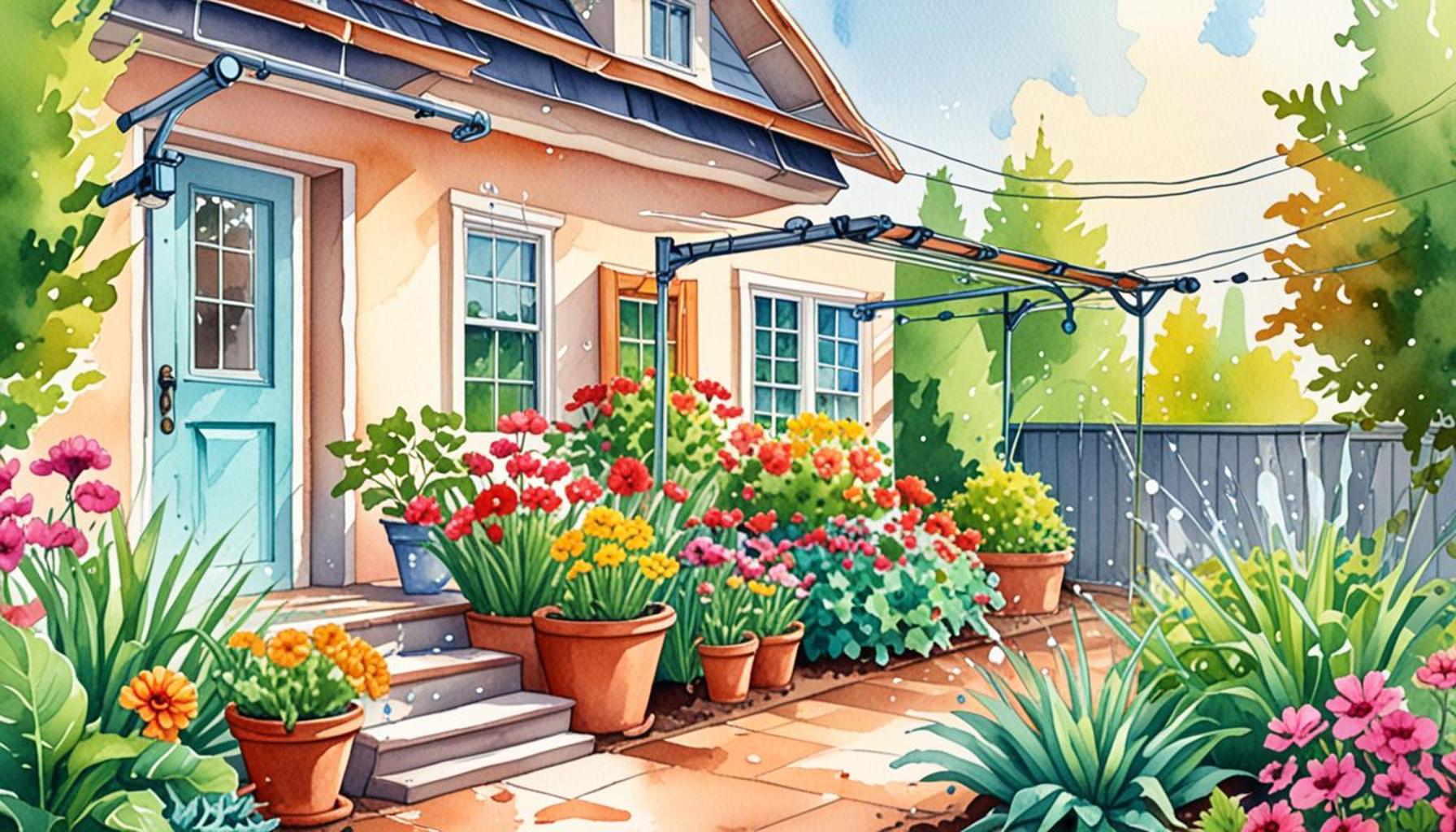
Understanding Automated Irrigation Systems
In the world of home gardening, the struggle to maintain hydration for plants can be overwhelming, especially for those juggling work, family, and other commitments. This is where automated irrigation systems come into play, offering a seamless solution to what has traditionally been a labor-intensive task. By utilizing these advanced systems, gardeners can not only save time but also enhance the overall health and vigor of their plants.
The Importance of Efficiency
Automated irrigation systems revolutionize the way water is supplied to plants. Instead of manually watering your garden, these systems ensure that moisture is delivered precisely where and when it is required. For example, drip irrigation systems place water directly at the plant’s root zone, minimizing evaporation loss and ensuring that the soil retains optimal moisture levels. This targeted approach leads to healthier plants, as it helps prevent issues like root rot, which can occur when plants are overwatered.
Conserving Water Resources
Water conservation is not just a trend; it has become a necessity. Automated systems are designed to significantly reduce water waste, making them an eco-friendly choice. Traditional gardening often results in water being lost to runoff or evaporation during hot days. In contrast, modern irrigation technologies incorporate sensors that monitor soil moisture levels, activating only when necessary. This innovation not only conserves our vital water resources but also saves money on utility bills. In an era where water scarcity is an increasing concern, making such adjustments in our gardening practices can contribute to larger environmental efforts.
Customization for Optimal Growth
One of the standout features of automated irrigation systems is their customizability. Gardeners can tailor schedules and settings to meet the exact needs of their plants. For instance, different plant species have varying water requirements based on their growth stages and environmental factors. With programmable timers and moisture sensors, you can set irrigation to accommodate seasonal changes, ensuring your plants thrive regardless of external conditions.
The Growing Adoption in the U.S.
Home gardeners across the United States are increasingly embracing automated solutions to tackle the challenges posed by unpredictable weather and busy lifestyles. According to industry reports, the market for smart irrigation technologies has seen significant growth, with many gardeners opting for systems that integrate with smartphone applications. These apps allow users to monitor and adjust their garden’s watering schedule from anywhere, providing ultimate convenience.
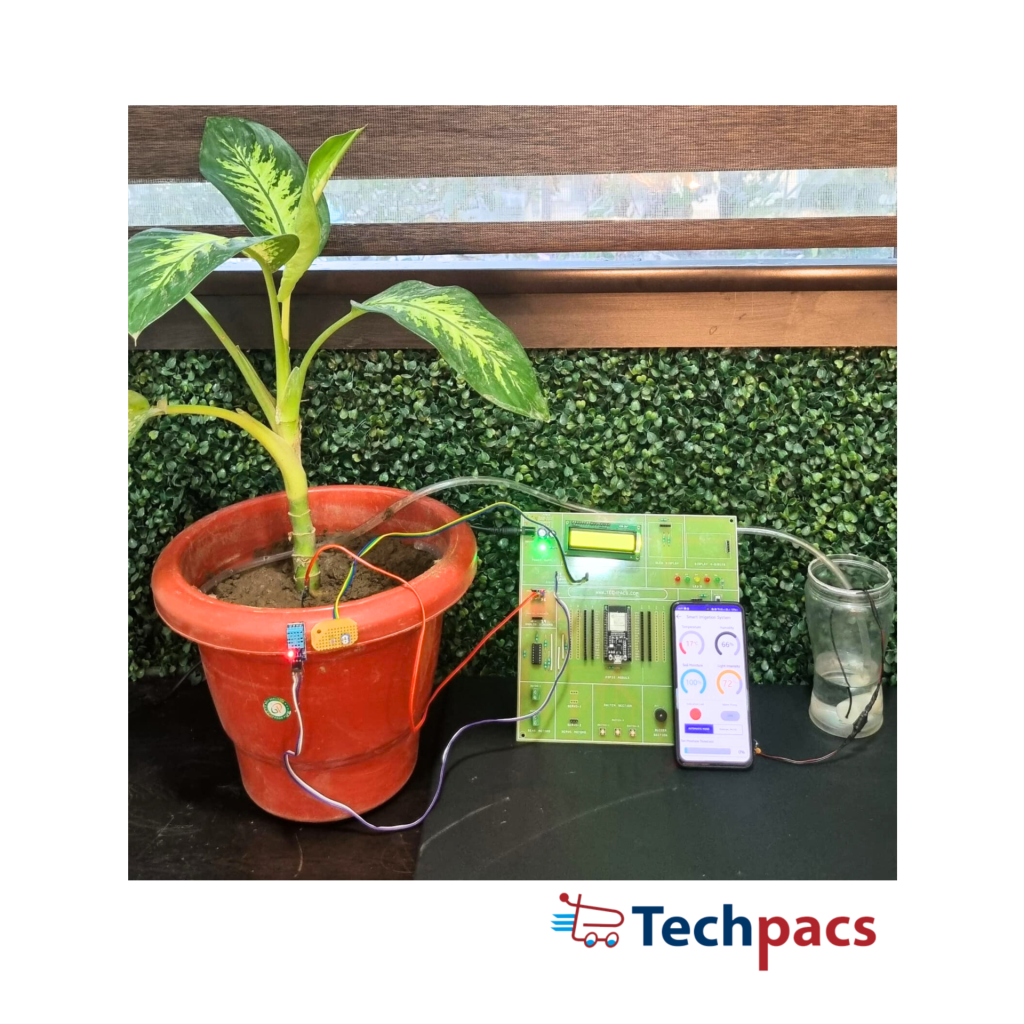
Exploring Different Types of Systems
In this guide, we will dive into various types of automated irrigation systems that can suit different gardening needs. From drip irrigation systems ideal for vegetable gardens to sprinkler systems suitable for larger landscapes, we will cover features, benefits, and installation tips. Whether you are a seasoned gardener with years of experience or just starting out, investing in automation has the potential to transform your gardening routine significantly.
By integrating these systems into your gardening approach, you not only streamline your watering process but also contribute positively to the environment and the health of your plants. The evolving technology behind automated irrigation systems is set to make home gardening more efficient and enjoyable than ever before.
DISCOVER MORE: Click here for natural pest control strategies
Exploring the Different Types of Automated Irrigation Systems
When it comes to home gardening, selecting the right automated irrigation system can be crucial in ensuring your plants receive the proper care they need while maximizing efficiency. As technology advances, a variety of systems have emerged, each with unique functionalities that cater to different gardening requirements. Understanding these types can help you make an informed decision on which system best suits your gardening style and plant needs.
1. Drip Irrigation Systems
Drip irrigation is one of the most efficient methods for delivering water directly to the base of your plants. This system uses a network of tubes and emitters to dribble water slowly and consistently into the soil, minimizing evaporation and runoff. Ideal for vegetable gardens and flower beds, drip systems are tailored to efficiently hydrate individual plants without wasting water. Home gardeners can easily customize their setups by adjusting emitter flow rates and placement.
2. Sprinkler Systems
For larger landscapes, sprinkler systems are a great option. They cover wider areas and can be configured to water specific zones in your yard. There are different types of sprinklers, including stationary, oscillating, and rotating varieties, each serving different garden types. With the ability to program schedules and durations, these systems allow for flexible watering that can be adjusted based on weather conditions and plant growth stages.
3. Soaker Hoses
Soaker hoses offer another economical and low-tech solution for automated irrigation. These porous hoses can be laid out on top or just beneath the soil surface, releasing moisture slowly over time. Perfect for garden beds and rows of plants, soaker hoses enable deep watering while reducing evaporation. They can easily be connected to timers, allowing for efficient watering without manual effort.
4. Smart Irrigation Systems
As the name suggests, smart irrigation systems elevate automation to a high-tech level. These systems can connect to Wi-Fi, enabling gardeners to monitor and control their irrigation remotely via smartphone apps. With integrated weather forecasting, moisture sensors, and smart scheduling capabilities, users can optimize water use, ensuring that gardens receive adequate hydration during dry spells while avoiding overwatering during rainy conditions.
5. Rainwater Harvesting Systems
For an eco-friendly approach, consider installing a rainwater harvesting system. These setups catch and store rainwater from rooftops for later use in irrigation. By redirecting this natural resource, gardeners can significantly reduce their dependence on municipal water supplies while maintaining a sustainable gardening practice. Coupled with automated timers and drip systems, rainwater can be used effectively to nourish gardens.
Choosing the right system is vital for efficient water application, and understanding the various options available ensures that you can optimize your home gardening experience. As you dive into automated irrigation, remember to consider the size of your garden, the types of plants you’re growing, and the level of technology you’re comfortable using.
Advantages of Automated Irrigation Systems in Home Gardening
Automated irrigation systems have revolutionized the way home gardeners manage their water usage, providing multiple benefits that promote efficient gardening practices. Let’s explore how they can enhance your gardening experience through a well-organized table of advantages.
| Feature | Advantage |
|---|---|
| Water Efficiency | Reduces water wastage by delivering the precise amount needed, allowing for sustainable gardening practices. |
| Time-Saving | Automates the watering process, freeing up valuable time for gardeners to focus on other important tasks. |
| Consistency | Ensures even watering, promoting healthier plant growth by eliminating fluctuations in moisture levels. |
| Customization | Allows gardeners to set specific watering schedules based on plant types and seasonal needs. |
Incorporating an automated irrigation system enhances not only the efficiency of gardening practices but also encourages a thriving garden. The ease of customization and precise water management not only benefits your plants but also aligns with eco-friendly gardening initiatives. Consider how these systems can reshape your gardening experience by allowing more time to nurture creativity and growth in your outdoor space.
LEARN MORE: Click here for essential gardening tips
Setting Up and Maintaining Your Automated Irrigation System
Once you’ve chosen the most suitable automated irrigation system for your home garden, the next step is to ensure it’s set up and maintained effectively to maximize its benefits. Proper installation and maintenance can mean the difference between a flourishing garden and one that suffers from under or overwatering.
1. Installation Tips
To achieve optimal performance from your irrigation system, follow these installation tips:
- Plan the Layout: Before installation, sketch out your garden with designated zones based on plant water needs. Group plants with similar water requirements to optimize irrigation efficiency.
- Read the Instructions: Always refer to the manufacturer’s instructions for specific guidance on installation. Each system may have unique requirements based on design and technology.
- Test Water Pressure: Ensure your water pressure is appropriate for your chosen irrigation system. Low pressure can affect performance, while high pressure may damage delicate components.
- Install Filters: If using drip or soaker hoses, installing a filter can prevent debris from clogging the emitters, ensuring consistent water flow.
2. Automating the Watering Schedule
The beauty of automated irrigation systems lies in their capacity to customize watering schedules. Many systems offer programmable timers that can be set to water during ideal times, such as early morning or late evening, minimizing evaporation losses. Consider these factors when setting your schedule:
- Weather Patterns: Utilize weather sensors available in smart irrigation systems to dynamically adjust watering based on rainfall and humidity levels.
- Plant Growth Stages: Change your watering schedule seasonally or as your plants mature, ensuring adequate hydration during critical growth periods.
- Soil Moisture Levels: Using moisture sensors can help maintain the perfect balance of hydration tailored to current soil conditions, avoiding water stress.
3. Regular Maintenance Practices
To keep your automated irrigation system running smoothly, consistent maintenance is essential. Here are some recommended practices:
- Inspect for Leaks: Regularly check hoses and fittings for leaks or cracks. Even small leaks can lead to significant water loss over time.
- Clear Clogs: Clean filters and emitters periodically to ensure uninterrupted water flow. Clogged components can lead to uneven watering.
- Service Timers and Sensors: Make sure that timers and sensors are functioning properly. Replace batteries and update settings as necessary.
4. Testing the System
After installation and initial setup, it’s crucial to test your system. Run the irrigation cycle and check for even distribution of water across your garden. Look for dry spots, puddles, or areas that receive too much water, and make necessary adjustments.
By taking the time to properly set up, automate, and maintain your automated irrigation system, you can significantly enhance your gardening efforts and ensure that your plants thrive. Not only does this contribute to a bountiful harvest or vibrant blooms, but it also supports environmental sustainability by using water more efficiently. Embracing these advanced systems is a step toward a flourishing and convenient home gardening experience.
CHECK OUT: Click here to find out when to harvest your veggies!
Conclusion
As urban gardening continues to gain popularity, automated irrigation systems provide a vital resource for garden enthusiasts looking to simplify their watering process while ensuring optimal plant health. The ability to automate watering schedules not only alleviates the burden of manual gardening tasks but also promotes a sustainable approach to water use. This is especially important amidst growing concerns about water conservation and climate change.
Effective installation and ongoing maintenance are crucial in reaping the benefits of automated irrigation systems. By meticulously planning your garden layout, tailoring schedules to match both plant needs and weather patterns, and regularly inspecting your system for clogs and leaks, you can create a thriving garden that flourishes with less effort and lower water consumption.
Moreover, employing technology such as moisture sensors and weather stations enhances your irrigation system’s efficiency, allowing for dynamic adjustments that cater specifically to your plants. This approach not only ensures the longevity of your garden but also aligns with eco-friendly practices, contributing to a more sustainable environment.
In conclusion, by investing in a well-designed automated irrigation system and taking the time to properly maintain it, you open the door to a convenient and rewarding home gardening experience. As you cultivate your green spaces, may you find joy in both the process and the plentiful produce that follows. With the right tools and knowledge, the garden of your dreams is within reach.

